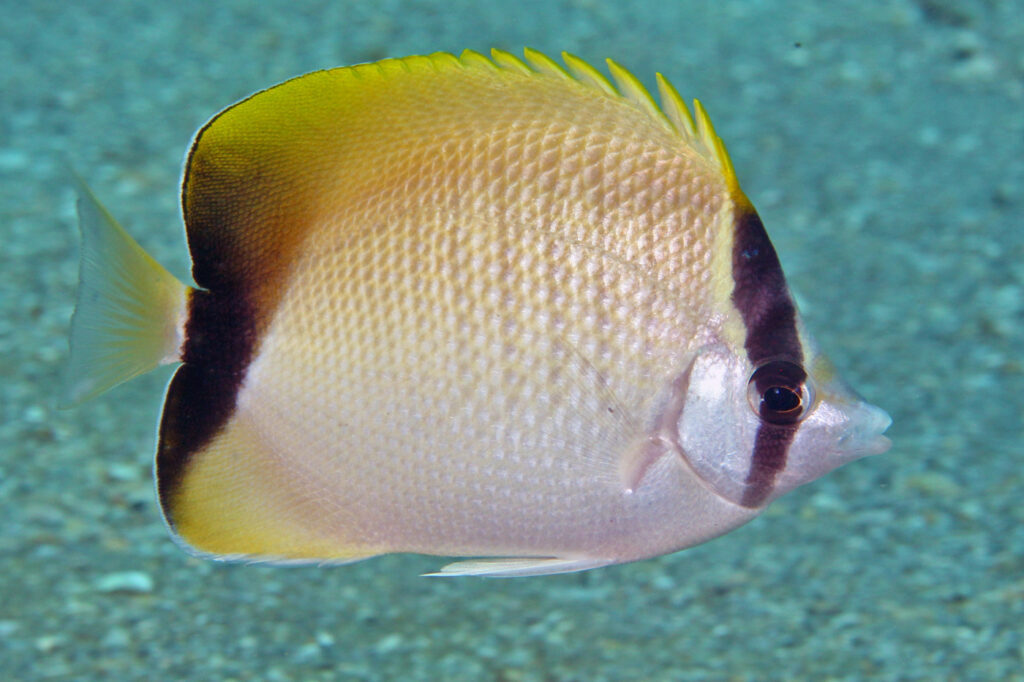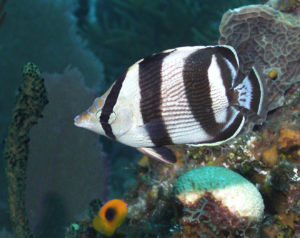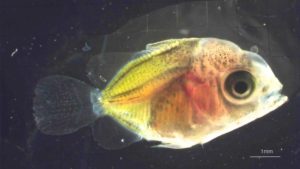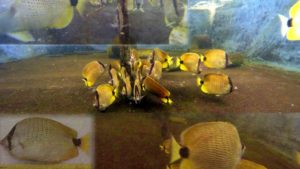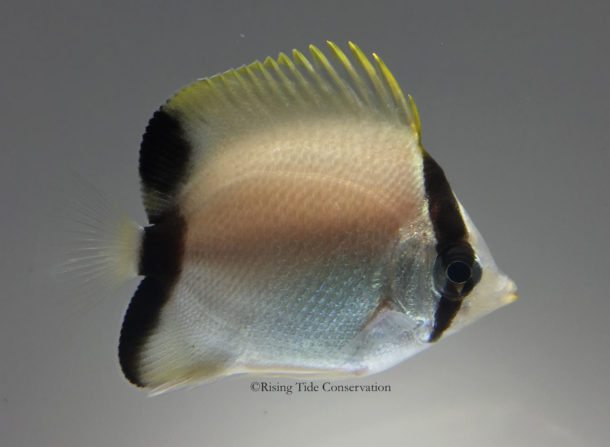
The UF/IFAS Indian River Research and Education Center, with Rising Tide Conservation, is pleased to announce the successful aquaculture of the reef butterflyfish, Chaetodon sedentarius!
This success was achieved by the hard work of Dr. Cortney Ohs, Isaac Lee, Jason Broach, and Andrew Palau, with research funding from Rising Tide Conservation.
Family: Chaetodontidae (Butterflyfishes)
Genus: Chaetodon
Common names: Reef Butterflyfish, Least Butterflyfish, Butterbun
Dr. Ohs writes the following about this accomplishment:
“We have one pair of reef butterflyfish, Chaetodon sedentarius, broodstock inside an 1800 liter round tank. They were acquired in May of 2015 from Marathon, FL, and were originally collected by Dynasty Marine. They began spawning three months later in August. They are fed four times a day with an Otohime EP1 pellet, PE Mysis, mullet roe, and Larry’s Fertility Frenzy. They spawn once every 2-3 days and produce approximately 3000-5000 eggs per spawn with >90% viable eggs. For this run, 3000 eggs were stocked out into a 440L fiberglass tank with black sides and a black bottom. The larval system was equipped with a 80 W UV sterilizer, two bag filters with 50 and 10 μm felt bags, a protein skimmer and trickle filter. One direct LED light was set on a 12 L: 12 D cycle and an ambient fluorescent light from an indirect source was on a 24 L: 0 D cycle. The tank was overturned 6x per day. Larvae were fed Parvocalanus crassirostris copepod nauplii (5.3/mL) twice a day and Brachionis plicatilis rotifers enriched with Selco S.presso (8.6/mL) once a day beginning 4 days post hatch.
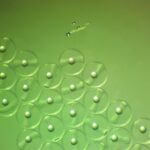

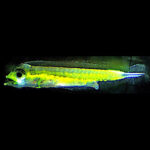
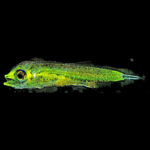
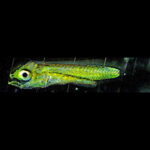
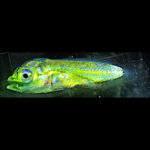
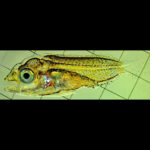
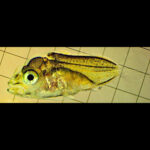
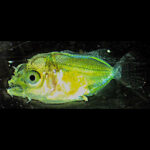
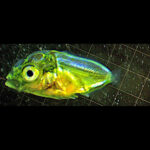
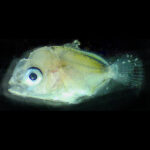
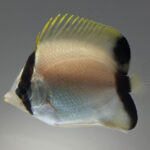
T-Isochrysis was added twice a day and timed with feedings of copepod nauplii. At 20 dph, we incrementally began adding newly hatched Artemia nauplii to the diet twice a day starting at 0.01 /mL and reaching 0.2/mL over the course of 8 days. At 28 dph, we stopped feeding rotifers. At 34 dph, we stopped feeding copepod nauplii. We began feeding Otohime A1 dry diet at 43 dph.
The last mortality was recorded at 36 dph. Survival for this trial was 0.1% for three individuals. The larvae remained a bland grayish coloration until about 70 dph when they began to take on the adult coloration. The color change began with a black band that goes vertically across the eyes, then the posterior edges of the dorsal and anal fins began to darken up, followed by a yellow ridge developing across the top of the dorsal fins, finally the body then began to turn a brighter white.
We look forward to replicating the success and we hope that you’ll continue to follow our successes and support Rising Tide Conservation!”

